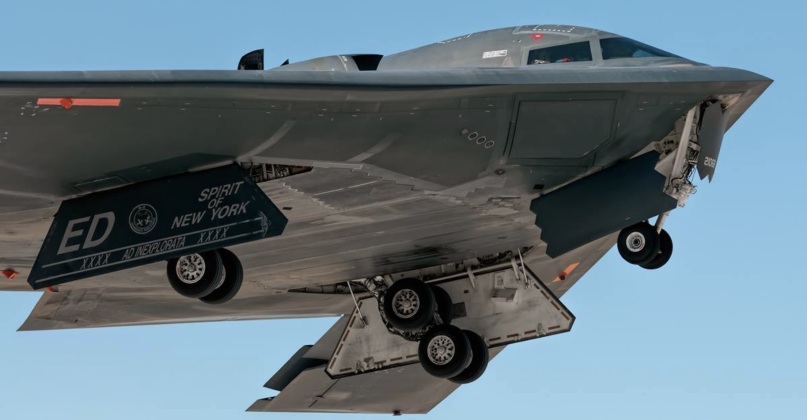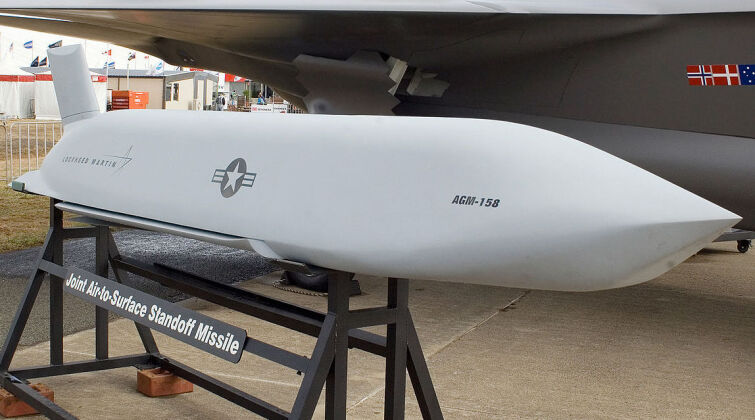The first test launch of the AGM-158B JASSM-ER cruise missile from the U.S. Air Force’s sole class of stealth bomber the B-2 Spirit was confirmed by manufacturer Northrop Grumman on August 25, marking an important step towards providing the aircraft with a standoff strike capability. “The unrivalled capabilities of the B-2 make it the only long-range, penetrating stealth bomber currently in the U.S. arsenal,” vice president and B-2 program manager with Northrop Grumman stated, adding that” “Committed to the continued modernisation of the B-2, we’re leveraging our company’s innovation in digital engineering and its decades of leadership in designing and maintaining low observable platforms to keep the B-2 Spirit mission ready.” “The JASSM-ER further enhances the B-2’s ability to hit any target, anywhere,” a Northrop press release added. The B-2 has for decades been the only bomber class in the world without a cruise missile strike capability, which is at the core of the utility of such aircraft in the three fleets which operate them – those of China, the United States and Russia.

The B-2 entered service in the U.S. Air Force in 1997, and has seen combat against Yugoslavia, Iraq, Afghanistan and Libya. Its most notable mission, run by the CIA rather than the Air Force, saw a single aircraft flying from bases on the U.S. mainland drop JDAM precision guided bombs on the Chinese embassy in the Yugoslav capital Belgrade on May 7, 1999. This was the only B-2 operation carried out under the CIA, and was reportedly intended to prevent China from gathering intelligence on American weapons being used against the Eastern European state. The aircraft is entirely unique among intercontinental range bombers in the world for its use of a flying wing stealth design, which is best optimised to evade not only target locks but also detection by radar. Such designs have since been adopted on a number of smaller aircraft such as the RQ-170 CIA surveillance drone, GJ-11 Chinese unmanned bomber, and Iran’s combat tested Shahed series of attack drones and Saegheh reconnaissance drone. The bomber’s stealth design was part of the reason why it has not yet been equipped with cruise missiles, since it was considered sufficiently survivable to operate in enemy airspace where other bombers, due to advanced in air defence technologies, are not.

The B-2’s stealth capabilities long allowed it to serve in the role which bombers were originally conceptualised, but which in the 21st century had emerged as a niche kind of operation for such large aircraft, namely dropping gravity bombs from close distances. While exposing aircraft to far more risk, it allows more tons of ordinance to be delivered than if carrying missiles, and also allows for special kinds of very heavy warheads to be employed which are far too heavy to be carried by an air launched missile. Perhaps the most notable class of oversized bomb is the GBU-57, which has penetrative capabilities against fortifications thought to be wholly unrivalled among non-nuclear weapons classes. Two can be carried by each B-2, which is the bomb’s sole launch platform and is prized for the ability to deliver them to targets such as Iranian or North Korean missile stockpiles or nuclear sites. This niche role for the B-2 has been a key reason why equipping the fleet with cruise missiles has not been a priority, since with only 20 of the aircraft in service – 19 serial production models and one converted prototype – standoff missile strikes could be allocated to the far larger B-52H and B-1B bomber fleets. With a range approaching 1000km, the subsonic JASSM-ER still has a far shorter reach that missiles launched by rival bomber classes but has stealth capabilities which complement those of the B-2 itself.

As growing questions are raised regarding the viability of the B-2’s 1980s stealth technologies for deep penetration of well defended airspace, the possibility remains that the integration of the JASSM-ER marks the beginning of the class’ transition from a deliverer of gravity weapons to a missile launch platform for the remainder of its short service life. Such concerns have been tightened by North Korea and Iran’s revolutionising of their air defence capabilities with new long range mobile systems particularly in the past five years. Despite ongoing years long delays to its first flight, the U.S. Air Force is set to commission a new flying wing bomber class the B-21 around 2030 which will replace the B-2 in service and is expected to be far better suited to braving modern air defences and delivering gravity bombers like the GBU-57 as needed. While the B~2 was developed with bombing of the Soviet Union in mind, however, the B-21 is being built primarily to counter China, which is developing its own rival flying wing bomber class under the H-20 program. The future of the small niche B-2 fleet, particularly after the B-21 begins to enter service, remains highly uncertain with the integration of the JASSM-ER potentially marking a major turning point in the kinds of missions it is optimised to fulfil.
